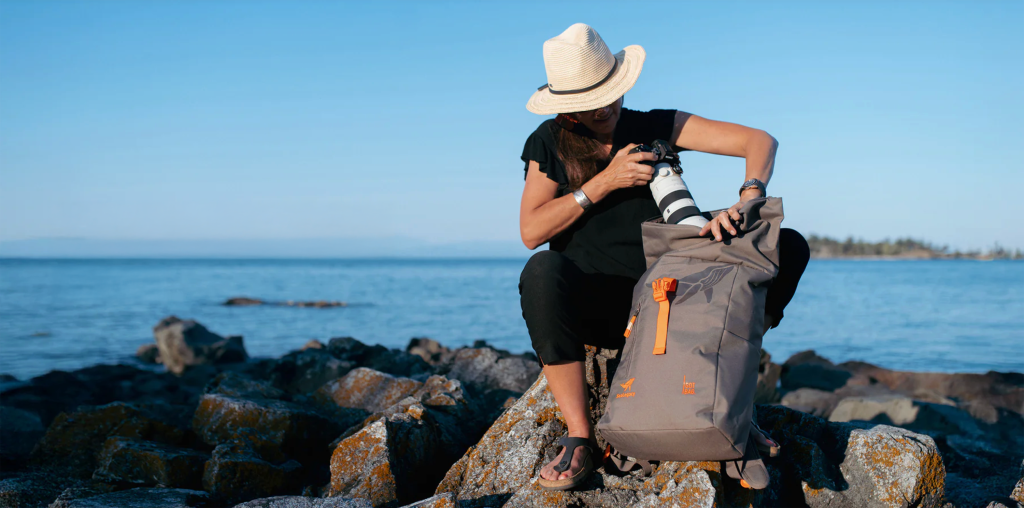By Cristina Mittermeier and Jamie Goncalves, originally published through Katie Couirc Media in April 2025.
A New Gold Rush, Two Miles Underwater
Corporations are racing to be the first to mine the deep sea, in search of rare metals for EV batteries. But this race is outpacing – or blatantly ignoring – the rules designed to protect the ocean and our planet.
Here’s an Overview
On the seafloor lie billions of fist-sized “polymetallic nodules” rich in cobalt, nickel, manganese, and copper—all critical for current EV batteries. Companies claim scooping them up is cleaner than blasting mountains on land. Marine scientists say, think twice.
- Deep-sea ecosystems evolve over millennia and may never recover from disturbance.
- Sediment plumes could smother coral, sponge, and microbial communities vital to carbon cycling and oxygen production.
- Battery tech is already pivoting toward cobalt-free chemistries like lithium-iron-phosphate, and robust metal-recycling pipelines could meet future demand.
Meet the Referee: The International Seabed Authority
Formed under the UN Convention on the Law of the Sea (UNCLOS) in 1994, the International Seabed Authority (ISA) has 169 member states and a clear mandate: manage the seabed as “the common heritage of humankind.” The catch? The United States never ratified UNCLOS, opening a glaring loophole. This year, the fight over deep-sea mining hit a critical turning point. In March 2025, global negotiations at the ISA took center stage, only to be followed by a shocking move from The Metals Company (TMC), a Canadian firm, which is attempting to sidestep international law altogether.

Ghost shrimp on a soft coral in Raja Ampat, Indonesia. Photo by Cristina Mittermeier
So, what is deep-sea mining, why is it such a big topic, and what does this mean for the planet’s future?
For years, TMC has been pressuring the ISA to draw up deep-sea regulations so they can start mining, but the rules are still incomplete. How can we draft regulations for an ecosystem we know so little about? Frustrated and losing investors, TMC took to a more aggressive tactic, announcing it would apply for a license to mine in June 2025, with or without regulations. If successful, this could open the doors to large-scale industrialization of the deep sea.
The latest twist: The Metals Company and the U.S.
At the March 2025 ISA meeting in Jamaica, negotiations were shifting toward a more science-driven, precautionary approach. But as opposition to mining grew, a desperate TMC announced plans to apply for an exploitation license in the U.S., taking advantage of outdated mining laws. These laws — written before UNCLOS and the ISA even existed — ignore international governance and decades of science.
This move shocked the world. By bypassing the ISA, TMC is disregarding international law, setting the stage for a “Wild West” approach to ocean exploitation. President Donald Trump recently signed an executive order to open U.S. waters to deep-sea mining with sights set on international waters, as well. The fear is that other major powers, like China and Russia, will follow suit, further undermining international governance.
What happens next?
Because the U.S. is not a member of the ISA, it can legally issue a mining license to TMC under its own laws, regardless of what the ISA decides. However, this doesn’t mean the fight is lost. The rest of the world can still ban deep-sea mining. Other countries, consumers, and corporations can reject deep-sea minerals, making it difficult for TMC to find buyers. Pacific nations can make mining a logistical nightmare, refusing to let vessels refuel or dock. The goal now is to make mining the deep sea so unprofitable that it collapses under its own weight before it even begins.
Youth & Civil Society Take the Helm
SeaLegacy has teamed up with the Sustainable Ocean Alliance (SOA) to advocate for a global moratorium. SOA’s Europe lead Eugénia Barroca, present at the March ISA talks, warns that corporate pressure risks overpowering science and equity. Still, she’s inspired by a growing coalition of countries backing a pause.
“It has been encouraging to see a strong coalition of states standing up for the ocean,” — Eugénia Barroca, SOA
The next ISA meeting in July 2025 will be pivotal in determining how the world reacts to TMC’s disregard for international law. SeaLegacy will be attending with SOA, standing up for the future of our oceans. As resistance to deep-sea mining grows, it’s become part of a larger struggle: pushing back against a handful of billionaires attempting to dictate the planet’s future. Stay in the loop by following us and SOA on Instagram for real-time updates.
How You Can Protect the Deep
Stay informed – Follow @SeaLegacy & @soalliance on Instagram for live July 2025 ISA coverage
Take the SOA course – Their free Deep-Sea Mining 101 program equips you to speak up.
Watch “Deep Rising” – This documentary unpacks the politics, economics, and ecology of seabed mining.
Call your representatives – Urge them to support a precautionary pause and invest in metal recycling, not seabed dredging.




